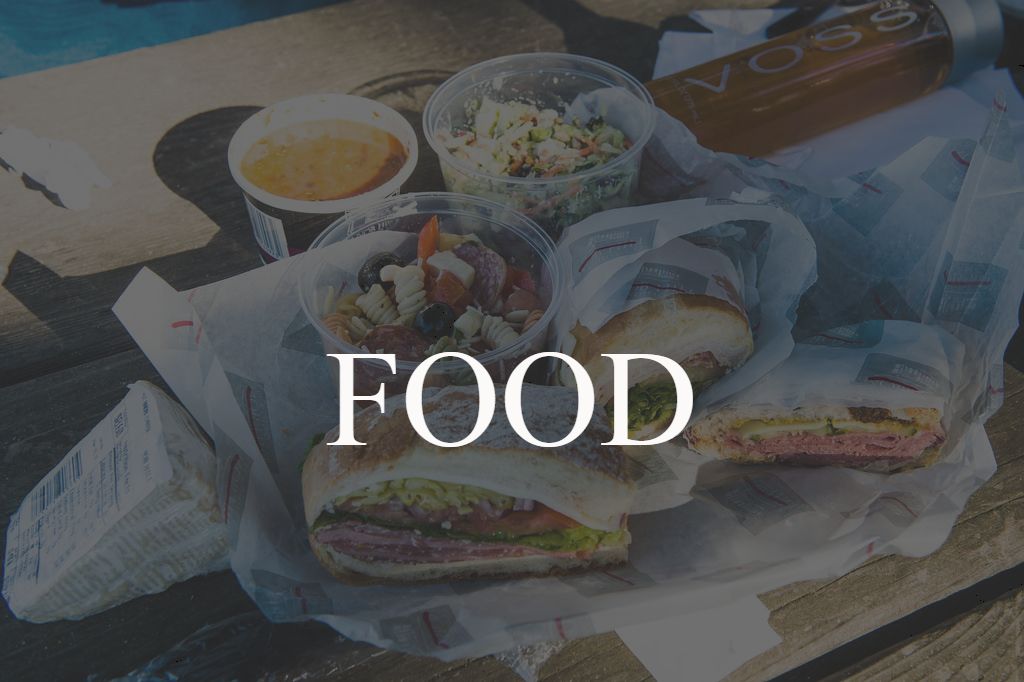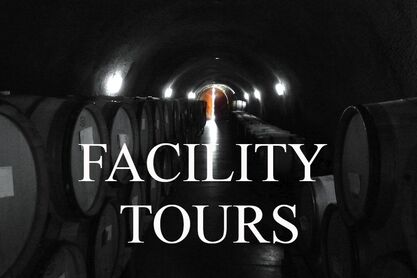What is Modern versus Historic Wine making Techniques?
OLD-WORLD (Historic):
Some of these Old-World producers also produce their wines Bio-Dynamically.
And some, take it a step further, and use a number of historical old-world techniques to produce the wine, including Clydesdale horses in place of tractors (Illahe Vineyards for example). Moving the wine into barrel with hand crank DE stemmers or bicycle pumps in place of electricity. Storing the wine in wood or clay amphorae fermenters and/or fermenting the grapes while still on the stems, resulting in wine that's uniquely aromatic and textured. They will utilize wild yeasts in wood fermenters, and press by hand in a wooden basket. The use of a bicycle pump to move the wine from the press to barrel. After racking the wine by bicycle pump, and getting it to bottle by gravity, they hand bottle, cork and label the wine. No machinery, hand-picked grapes, hand labeling and bottling and getting it to market by mule-powered stagecoach and canoe.
Brad Ford of Illahe vineyards says, “Now we use a mule-powered stagecoach and five canoes to make the three-day trip. The wine is delicious, and the trip is a journey to honor true wine and a time when hard work, careful crafting, and simple pleasures were the only options.”
Additionally, traditional (Historic) European red wines have dusty, dry tannins, a subtle use of oak and lower levels of alcohol and acids.
Historic techniques tend to be true to both the vintage and their geographical origin, are austere and elegant in character, and lead with their soil character, not their fruit character.
Many of these 'Old-World' wineries will also do blends, which keeps them mellow, approachable and food-oriented.
Some 'Old-World' wineries here in the Willamette Valley, include J. Christopher, Lemelson, Lachini, Illahe, and Beckham. And Domaine Pouillon, in the Columbia River Gorge.
Contrast this wine style to New World wines, that emphasize the fruity character of the grape, possess higher alcohol, and place more emphasis on newer (stronger) oak. Many believe that a lot of the time, the modern techniques are masking tehr wahr, and geographical character.
Many Oregon wineries employ modern techniques as opposed to the French style historic techniques.
NEW-WORLD:
Modern wines are deeply colored, fruit-driven, and extract-rich.
They become deeper colored through extraction.
New oak is used, because it often results in cleaner, more textured wines, with suppler tannins.
Wine producer‘s tend to go through a cycle, first of all underutilizing new oak, then suddenly overdoing it, and finally settling down and getting it right.
And perhaps most important, adding Malolactic fermentation in the barrel, whose effect you would taste much more early on than later on. Malolactic fermentation (MLF) may sound mysterious, but it's a technique every modern winemaker should master.
It's quite different from "regular" fermentation, in which yeast convert sugar into alcohol. MLF involves bacteria instead of yeast, and it usually begins when primary fermentation is complete, around 0° Brix.
Malolactic fermentation is conducted by Leuconostoc bacteria cultures. These bacteria convert malic acid, which is naturally present in fruits like grapes and apples, to lactic acid. This reduces the acidity of the must and improves the flavor of your wine. After MLF, the wine's flavor profile is more smooth, round and complex. Malolactic fermentation can occur spontaneously, as in historic wine making, or you can conduct it yourself.
New World wineries tend to separate the vineyard and winery, where you have winery people, and you have vineyard people, and you have very few wineries where the people who make the wine, are also the people out in the vineyard.
More...
Just as modern gem cutters use lasers to perfect time honored, diamond cuts, and unleash the brilliance of a gem, wineries thoughtfully introduce new wine making tools, to remove imperfections, and reveal the varietals true beauty and character.
In such Old World trades, tools are critical, yet secondary to the artistry, skill, judgment and experience of the craftsman.
The wine maker’s intimacy with each of the barrels he procures from various parts of French oak forests, for instance, allows him to thoughtfully match vessel to vineyard, revealing the site’s best fruit profile. Drawing on intuition and scientific sensibilities, they quantify myriad factors – soil variations, clone selections, weather, barrel personalities – and wields them into quality wine, year after year.
Across all of the tiers, from premium barrel and estate selections, to the value-priced wines, wine making remains focused on bringing out the best characteristics of the vineyard.
Quality Oregon wine begins with quality fruit, which is why the wine maker's actively farm vineyards throughout Oregon to achieve consistency in style. However, it is their embracement of new technologies, that has allowed them to transform thin-skinned Pino grapes, into memorable, critically acclaimed wines that are also affordable.
There are pros and cons to each of the 2 techniques.
Overall, wines are becoming easier to enjoy, and perhaps that just reflects a phenomenon.
I suppose the ideal is a combination of traditional and modern, and many producers manage that: they are able to make more attractive wines than their parents did, without losing their own innate character.
Many argue, that current tastes are beginning to value a different sort of wine more highly. These other regions that are making wines that lead with their fruit as opposed to their soil character, might be prized more highly among many consumers than their French counterparts. Also, there are markets that have firmly rejected traditional French styles.
They want the fruitiness, perhaps a bit more simplicity and more obvious character.
In the old days, many got onto wines they knew they were supposed to admire, they were always French. Now they might just as well be Californian or Oregonian for Americans.
OLD-WORLD (Historic):
- Allows Malolactic fermentation to occur spontaneously, rather than conducting it yourself, allowing the wines to evolve more slowly that favors aromatic complexity and texture, over giant fruit, and acidity over softness. The wines are getting racked when most other producers are bottling.
- Expresses Terroir (pronounced tehr wahr), a reflection of the place where the wine is grown. Or...it tastes like the dirt it's grown in.
- Employs the concept of the Veen-ye-rōn where the winemakers who tend their own vines live next door to their vineyards. Or...as the old French song says, the best fertilizer in the vineyard is the footprint of the owner.
Some of these Old-World producers also produce their wines Bio-Dynamically.
And some, take it a step further, and use a number of historical old-world techniques to produce the wine, including Clydesdale horses in place of tractors (Illahe Vineyards for example). Moving the wine into barrel with hand crank DE stemmers or bicycle pumps in place of electricity. Storing the wine in wood or clay amphorae fermenters and/or fermenting the grapes while still on the stems, resulting in wine that's uniquely aromatic and textured. They will utilize wild yeasts in wood fermenters, and press by hand in a wooden basket. The use of a bicycle pump to move the wine from the press to barrel. After racking the wine by bicycle pump, and getting it to bottle by gravity, they hand bottle, cork and label the wine. No machinery, hand-picked grapes, hand labeling and bottling and getting it to market by mule-powered stagecoach and canoe.
Brad Ford of Illahe vineyards says, “Now we use a mule-powered stagecoach and five canoes to make the three-day trip. The wine is delicious, and the trip is a journey to honor true wine and a time when hard work, careful crafting, and simple pleasures were the only options.”
Additionally, traditional (Historic) European red wines have dusty, dry tannins, a subtle use of oak and lower levels of alcohol and acids.
Historic techniques tend to be true to both the vintage and their geographical origin, are austere and elegant in character, and lead with their soil character, not their fruit character.
Many of these 'Old-World' wineries will also do blends, which keeps them mellow, approachable and food-oriented.
Some 'Old-World' wineries here in the Willamette Valley, include J. Christopher, Lemelson, Lachini, Illahe, and Beckham. And Domaine Pouillon, in the Columbia River Gorge.
Contrast this wine style to New World wines, that emphasize the fruity character of the grape, possess higher alcohol, and place more emphasis on newer (stronger) oak. Many believe that a lot of the time, the modern techniques are masking tehr wahr, and geographical character.
Many Oregon wineries employ modern techniques as opposed to the French style historic techniques.
NEW-WORLD:
Modern wines are deeply colored, fruit-driven, and extract-rich.
They become deeper colored through extraction.
New oak is used, because it often results in cleaner, more textured wines, with suppler tannins.
Wine producer‘s tend to go through a cycle, first of all underutilizing new oak, then suddenly overdoing it, and finally settling down and getting it right.
And perhaps most important, adding Malolactic fermentation in the barrel, whose effect you would taste much more early on than later on. Malolactic fermentation (MLF) may sound mysterious, but it's a technique every modern winemaker should master.
It's quite different from "regular" fermentation, in which yeast convert sugar into alcohol. MLF involves bacteria instead of yeast, and it usually begins when primary fermentation is complete, around 0° Brix.
Malolactic fermentation is conducted by Leuconostoc bacteria cultures. These bacteria convert malic acid, which is naturally present in fruits like grapes and apples, to lactic acid. This reduces the acidity of the must and improves the flavor of your wine. After MLF, the wine's flavor profile is more smooth, round and complex. Malolactic fermentation can occur spontaneously, as in historic wine making, or you can conduct it yourself.
New World wineries tend to separate the vineyard and winery, where you have winery people, and you have vineyard people, and you have very few wineries where the people who make the wine, are also the people out in the vineyard.
More...
Just as modern gem cutters use lasers to perfect time honored, diamond cuts, and unleash the brilliance of a gem, wineries thoughtfully introduce new wine making tools, to remove imperfections, and reveal the varietals true beauty and character.
In such Old World trades, tools are critical, yet secondary to the artistry, skill, judgment and experience of the craftsman.
The wine maker’s intimacy with each of the barrels he procures from various parts of French oak forests, for instance, allows him to thoughtfully match vessel to vineyard, revealing the site’s best fruit profile. Drawing on intuition and scientific sensibilities, they quantify myriad factors – soil variations, clone selections, weather, barrel personalities – and wields them into quality wine, year after year.
Across all of the tiers, from premium barrel and estate selections, to the value-priced wines, wine making remains focused on bringing out the best characteristics of the vineyard.
Quality Oregon wine begins with quality fruit, which is why the wine maker's actively farm vineyards throughout Oregon to achieve consistency in style. However, it is their embracement of new technologies, that has allowed them to transform thin-skinned Pino grapes, into memorable, critically acclaimed wines that are also affordable.
There are pros and cons to each of the 2 techniques.
Overall, wines are becoming easier to enjoy, and perhaps that just reflects a phenomenon.
I suppose the ideal is a combination of traditional and modern, and many producers manage that: they are able to make more attractive wines than their parents did, without losing their own innate character.
Many argue, that current tastes are beginning to value a different sort of wine more highly. These other regions that are making wines that lead with their fruit as opposed to their soil character, might be prized more highly among many consumers than their French counterparts. Also, there are markets that have firmly rejected traditional French styles.
They want the fruitiness, perhaps a bit more simplicity and more obvious character.
In the old days, many got onto wines they knew they were supposed to admire, they were always French. Now they might just as well be Californian or Oregonian for Americans.















